Varicose veins are a common condition that affects many adults.
According to statistics, this disease develops more often in women than in men. These veins appear on the legs and become more common with age.
Further in the article, important facts about varicose veins are noted, the corresponding photos are given for a better understanding of what they look like, what they are and how they should be treated.
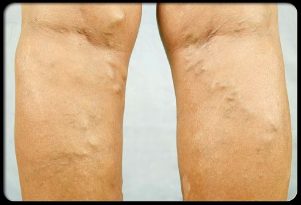
What are varicose veins?
Varicose veins are abnormally dilated veins that most often develop in the legs. Typically blue, purple or skin colored.
Looks like dilated, twisted and bulging blood vessels that can protrude beyond the surface of the skin.
What are spider veins?
Spider veins (also called telangectasias or spiders, vasculature) are a collection of small blood vessels that develop near the skin surface.
They are often red, blue or purple and have a web-like appearance. The most common spiders are found on the face and legs.
What causes the development of varicose veins?
Varicose veins are caused by structural abnormalities in the blood vessels.Veins carry blood from different parts of the body back to the heart. They have a series of unidirectional valves to prevent backflow of blood.
For various reasons, these valves can be damaged, causing blood to flow back into the veins. Further stagnation of blood increases the pressure inside the vein and weakens the blood vessel wall.
Thereafter, arachnoid and varicose veins develop due to stagnation of blood and dilation of the affected blood vessels.

The reasons for the development?
There are many different risk factors that increase a person's chances of developing varicose veins.
These include:
- old age,
- prolonged standing or sitting,
- obesity
- pregnancy,
- hormone therapy,
- takes birth control pills,
- injuries,
- former venous surgery,
- history of venous thrombosis,
- family history.
Symptoms of Varicose Veins
Varicose veins often show no symptoms and signs other than their unwanted cosmetic appearance. However, some people may experience certain symptoms from varicose veins.Symptoms may include:
- edema,
- throbbing sensation
- pain,
- burning sensation,
- itching,
- difficulty,
- tingling or leg cramps.
These symptoms often worsen after prolonged sitting or standing. Individuals may also develop brown skin color and eventually trophic ulcers.
Complications of varicose veins
Failure to treat varicose veins can lead to the following:
- Trophic skin ulcers develop. These open wounds usually appear on the lower leg. Sometimes they can lead to the development of a soft tissue infection.
- Blood clots in the veins (superficial thrombophlebitis) develop.
- Possible bleeding from veins.

Diagnosis of the vascular network and varicose veins in the legs
To diagnose the presence of varicose veins in the legs, you can carefully examine the affected area, which is usually on the legs.
The study consists of a visual examination and palpation of the problem area. Particular emphasis is placed on areas of redness, edema, discoloration of the skin and trophic ulcers.
Home treatment
There are various methods you can use at home to relieve some of your symptoms if they appear. These conservative methods can also help prevent any complications.
Compression stockings
Compression stockings are a simple home remedy that helps relieve leg symptoms.
They improve blood circulation by increasing the pressure in the legs. These socks come in different types and compression strengths. Your doctor may recommend a suitable pair for you. Usually sold at pharmacies.

Lifestyle changes
A regular exercise and weight loss program can help relieve the symptoms of arachnids and varicose veins.
Affected people should avoid standing or sitting for long periods and raising their legs while sitting or sleeping to improve circulation and reduce swelling in the legs.
Sclerotherapy
Sometimes conservative treatment of varicose veins at home can not give the desired results. In these cases, more specialized medical procedures can be performed depending on the location and size of the abnormal veins.
These medical procedures are often performed for cosmetic reasons.
Sclerotherapy is a common technique that can be performed by a physician; it is very effective in removing most of the spider veins and some varicose veins.
During this procedure, which does not require anesthesia, the doctor injects a liquid solution directly into the affected vein, causing it to stick together and eventually disappear. Multiple sessions may be needed to achieve optimal results. Potential side effects include bruising, swelling, bleeding, infection and discoloration of the skin.
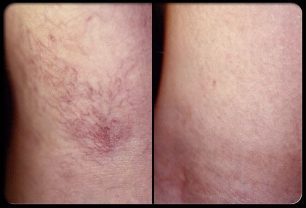
Sclerotherapy: before and after
Sclerotherapy treatments may require several sessions and the healing time may vary from person to person.
Generally, spiders begin to disappear within 3-6 weeks of treatment, while varicose veins can take several months to improve.
Laser treatment of varicose veins
Laser therapy is another alternative medical procedure that a doctor can also perform. It is sometimes used in addition to sclerotherapy to maximize results. This technique is most effective for spiders and small varicose veins.
For those patients who are afraid of needles, laser therapy provides an alternative treatment option, although a doctor may advise you on which treatment is best for your particular situation.
Laser therapy uses a focused beam of light that heats the affected blood vessel, which eventually disappears.
Potential side effects include slight redness or swelling around the treated area, discoloration of the skin, blisters and rarely scarring.
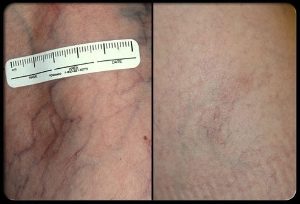
Laser therapy is a newly developed method of treating varicose veins, where the affected area is treated with light pulses at different intervals.
Laser therapy: before and after the procedure
As with sclerotherapy, multiple laser sessions are often required to achieve optimal results. Improvement may take several weeks to several months after treatment.
Venous surgery
Surgery is a treatment option for more severe cases of varicose veins. Your doctor will discuss with you the various possible surgical procedures to help you decide which treatment of varicose veins is best for you. One of the surgical methods is to connect the veins and remove them through small incisions in the skin.
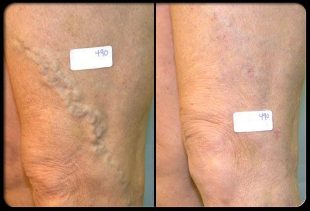
Vein surgery: before and after treatment
Ligation and removal of veins often successfully relieves symptoms and cosmetic problems of varicose veins. This surgery is performed under local, spinal or general anesthesia in a hospital.
Full recovery after this operation usually takes approx. 2-4 weeks. Potential complications may include infection, bleeding, scarring, nerve damage, deep vein thrombosis, and side effects of anesthesia.
Intravenous laser therapy
Intravenous laser therapy is a minimally invasive surgical procedure that involves laser irradiation through a thin conductor inserted into the affected vein, causing it to narrow.
Intravenous laser therapy has an initial success rate of 98%. This procedure is performed outpatient under local anesthesia or light sedation.
Patients report less pain and faster recovery with intravenous laser therapy compared to ligation and removal of veins by surgery.
Radio Frequency Ablation
Intravenous radiofrequency ablation is a minimally invasive procedure similar to intravenous laser therapy.
Instead of using laser light, a catheter inserted into a vein uses radio frequency energy, which warms and narrows the affected vessel.
As with intravenous laser therapy, patients report less pain and faster improvement compared to ligation and removal of veins by surgery.
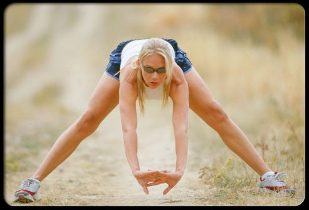
Varicose vein prevention
Although varicose veins can not always be prevented, there are various methods you can take to reduce your chances of developing them.
Prevention tips include:
- Regular training;
- Maintain a healthy weight;
- Avoid prolonged sitting or standing
- Avoid squeezing your legs while sitting;
- Lift your legs higher when resting;
- Do not wear clothing that squeezes your body around the waist, groin and legs.
Dear friends. This article is not medical advice and may not serve as a substitute for consulting a physician.






































